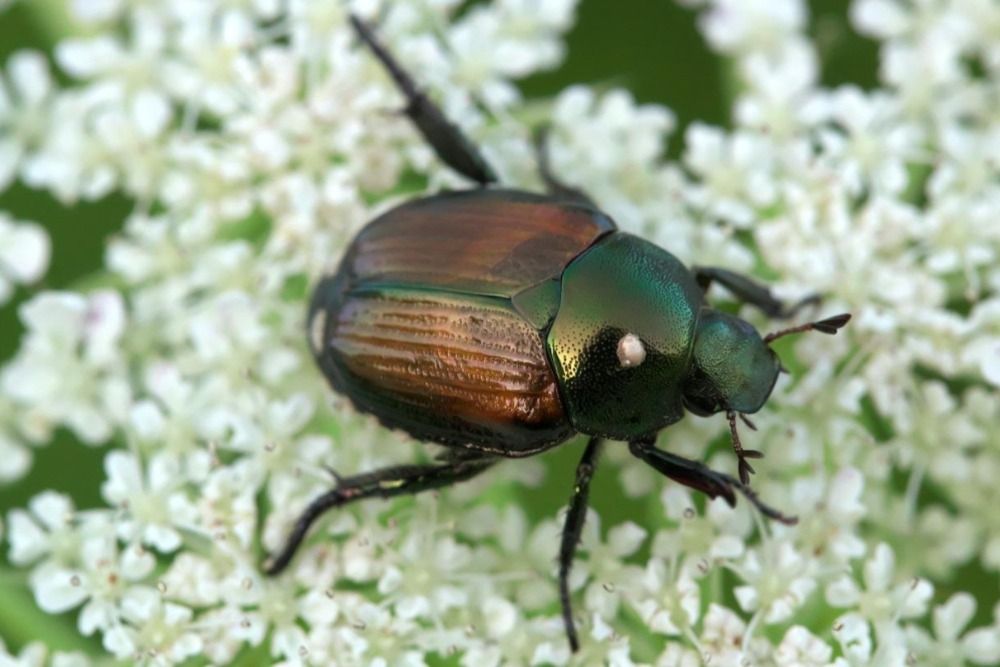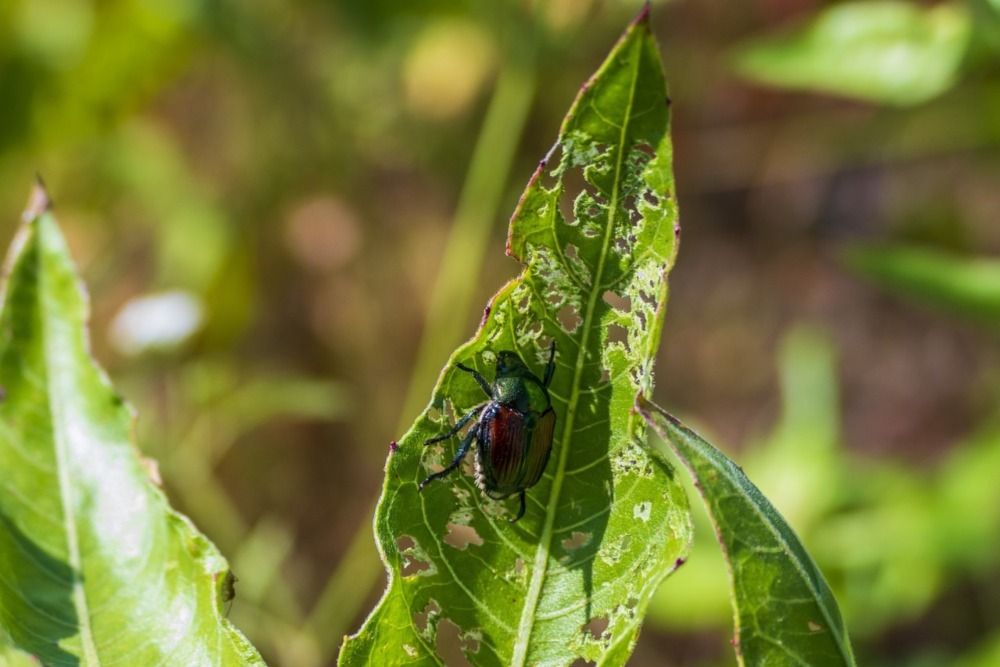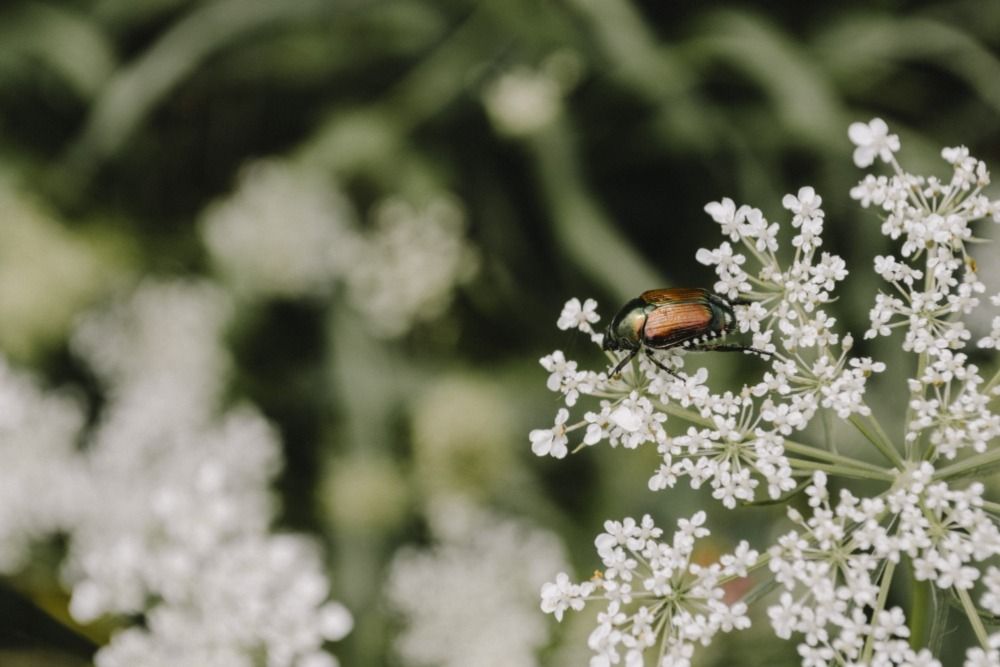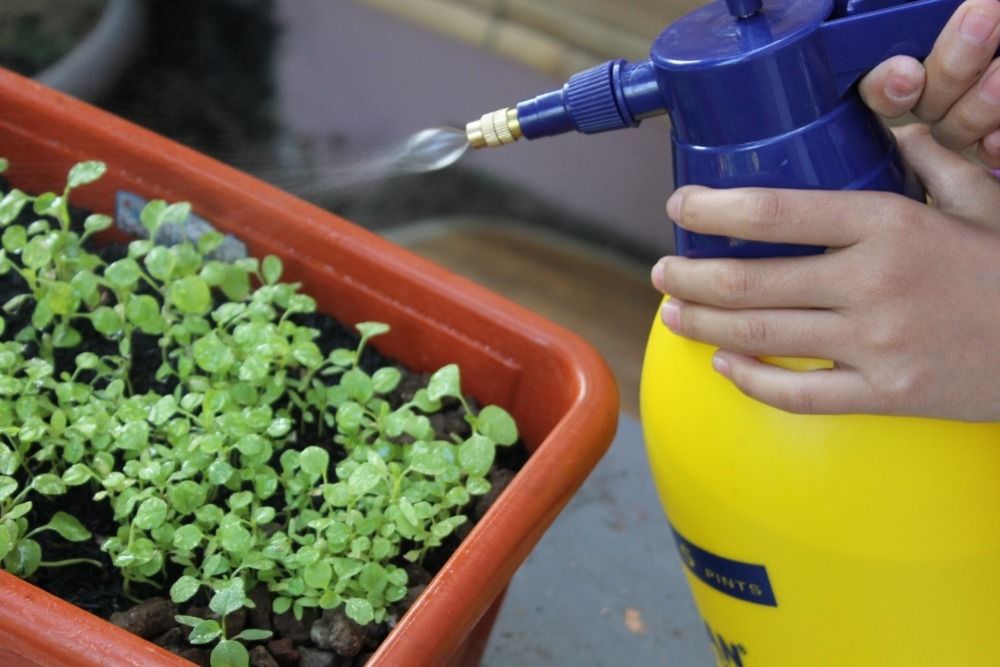Japanese beetles are destructive pests that can often leave gardens with skeletal-looking leaves and they can quickly reproduce in your garden before you can catch up to them! Once they take over your garden, they feed on most plants, such as roses, beans, and even trees.
You can identify Japanese beetles by their metallic backs and by the trail of frail leaves they ruin. They eat the main part of leaves, ignoring the veins, and lay their eggs in the ground. Their larvae look white, curled and have a tan or brown head.
Below you will discover tips on how to get rid of them, as well as ideas to help prevent their arrival in the future.
Method one: Hand Pick the Adult Beetles
Image credits: Richard Malo via Pixabay
Japanese beetles tend to move slower in the mornings and evenings, so it may be easier to pick them off your plants at these times. You may need to do this a few times over a couple of days or weeks depending on how many you have and how large of an area they are in. It works best before a large infestation when the amount of beetles are still manageable or when they are only on a few specific plants.
You'll need:
- A bucket or pail
- Soap
- Water
- Gloves
Instructions:
First, mix water and soap into a bucket until the water bubbles and appears soapy. Next, pluck the beetles off of your affected plants and throw them in the sudsy bucket. This should kill the beetles and be a quick fix.
Method Two: Netting
Image credits: Mdherren via Pixabay
Netting is an effective way of stopping the beetles from getting into your garden. You can buy tight netting from a local nursery or hardware store and place them carefully over the plants.
However, note that this method might not be as useful once beetles are already in your plants; The objective is too stop an infestation before it begins. This preventative measure should be put in place before the insects feeding period in mid-June.
If you already have Japanese beetles on your plants, try another method such as spraying the plant with a mixture of neem oil. For extra protection from these pests you can apply the neem oil then lay down the netting.
You'll need:
- A woven net
- Gloves if you prefer
- A weight or rocks
Instructions:
Place the net over the plants you want to protect. Making sure that the edges are kept down to prevent pests from getting in. This can be done with rocks along the perimeter or some type of weight.
Method Three: Collect the Dead Bugs
Image credits: Kelly Sikkema via Unsplash
It may seem like an unappealing option, but there has been a success with keeping dead Japanese beetles in containers nearby. The smell of the dead beetles tells other Japanese beetles to stay away. If you have sensitive plants that are not able to be sprayed, or you prefer not to cover your beautiful flowers with netting, this is another option to consider.
You'll need:
- A few small jars or containers with small holes in the lid or container itself
- Gloves
- Dead Japanese beetles
Instructions:
With the gloves, collect a handful of the dead beetles. Put the dead insects into the containers. Place the containers around your garden, or near affected plants.
Method Four: Sprays
Image credits: mayapujiati via Pixabay
There are a number of different sprays that you can use to fight off Japanese beetles. Some of them you can make simply from home, or you can buy a pesticide specifically for Japanese beetles. Below you can find pros and cons as well as considerations for each option so you can determine the best one for you and your garden.
You'll need:
- Spray of choice
- Water, if needed
- Spray bottle
Insecticide:
When buying insecticides, look for ones that are specifically for the Japanese beetle. And be careful to follow the directions provided to ensure you are not doing damage to your plants. These sprays are typically applied in the morning.
Neem Oil:
A natural pesticide, adult Japanese beetles will slowly stop congregating if the leaves are sprayed with neem oil. Mix 1 to 2 teaspoons of neem oil into a liter of water, and add a teaspoon of dish soap creating an adhesive so it will stick to the plant leaves.
Put the solution into the spray bottle and spray the affected plant, leaving it to dry. Spray the affected plants approximately once per week, as needed. There may also be instructions on the container that you can follow. Careful not to use neem oil around bodies of water or fish.
Wintergreen:
This wintergreen solution will make your plants unappetizing to Japanese beetles -- It also has the added bonus of smelling good! Mix 10 to 15 drops of Wintergreen essential oil into a cup of water. Put the solution into a spray bottle and aim at the affected plant, and leave it to dry. You can apply this solution once every few days if you are having a current infestation of beetles, or once every couple of weeks as a preventative measure.
Method Five: Geraniums
Image credits: Couleur via Pixabay
While planting geraniums will not keep the beetles away, they may be more attractive to the beetles than other plants you want to protect. This way, the Japanese beetles will munch on the geraniums nearby, instead of your prized roses, cherries, or vegetables!
Geraniums may also cause the beetles to become either dizzy or paralyzed and fall off the plant, so you can dispose of them. This is a great solution if you have plants that you would like to protect, while also adding another pretty flower to your landscape.
You can also plant marigolds for a similar effect.
Stop Japanese Beetles In Their Path!
Japanese beetles can be a difficult pest to remove from a garden, but there are many tricks to use. You can prevent them from attacking your plants with nets or by treating your plants with essential oils.
If you've already had their lace-like leaves appear, try out some of our tricks like Neem oil or hand-picking them into soapy water. You can always use a couple of these listed methods together for the best results to help your garden become Japanese beetle-free again!
Comment below if you know any other methods of removing these pests, and as always, please share!






